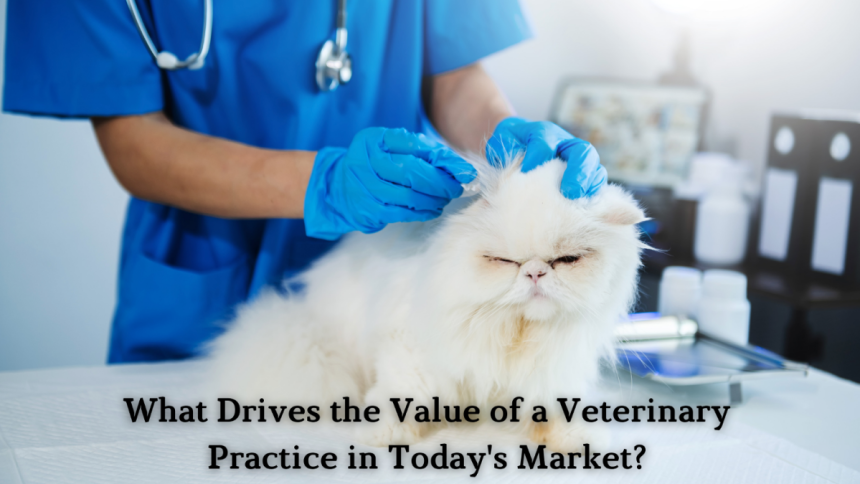With corporate consolidations accelerating and client expectations shifting, many independent veterinary clinics are questioning how to preserve or grow their market value.
In 2016, the U.S. veterinary reference laboratories market was valued at $660 million for production animals and $315 million for companion animals, highlighting the substantial role these services play in both agricultural and domestic settings.
This blog explores the key drivers influencing veterinary practice value and provides practical strategies to help clinic owners enhance their market potential, ensuring long-term profitability and competitiveness in an ever-evolving industry.
Understanding the Current Veterinary Market Landscape
The veterinary industry is undergoing rapid transformation, with increasing consolidation by corporate groups and evolving client expectations. These changes present both challenges and opportunities for independent veterinary practice owners who seek to maximize the value of their clinics.
Navigating this environment requires a deep understanding of key value drivers, such as financial performance, client retention, and technological investments. By focusing on these areas, practice owners can enhance their clinic’s market potential and ensure long-term success in an increasingly competitive landscape.
Key Methods for Valuing a Veterinary Practice
When determining the worth of your veterinary clinic, it’s essential to understand how to value a veterinary practice using industry-standard methodologies and current market conditions. A comprehensive valuation approach helps practice owners make informed decisions about their business’s future, whether planning for succession, considering a sale, or seeking to improve overall practice value.
Let’s explore the main valuation methods used in the industry today.
The Market Approach
This method compares your practice to others that have recently sold in your area. Key factors include:
- Recent Sale Prices: Look at the sale prices of similar veterinary practices.
- Market Trends: Consider current conditions and future trends in the industry.
- Location and Demographics: Geographic location and local demographics play a significant role in value.
- Practice Size and Services: The size of the practice and the range of services offered can influence valuation.
The Income Approach
This popular method focuses on your practice’s earning potential by evaluating:
- Historical and Projected Earnings: Analyze past earnings and future forecasts.
- EBITDA: Review earnings before interest, taxes, depreciation, and amortization to assess profitability.
- Cash Flow Stability: Stable cash flow is a key indicator of financial health.
- Growth Potential: Assess the potential for future growth.
The Asset-Based Approach
This approach evaluates both tangible and intangible assets, including:
- Equipment and Inventory: Determine the value of all physical assets.
- Real Estate: If you own property, it adds to your practice’s value.
- Goodwill and Brand: The value of your brand and goodwill in the community.
- Client Lists: The worth of your established client base.
This breakdown makes each approach clear and easy to follow for readers looking to understand veterinary practice valuation methods.
Critical Factors Influencing Practice Value
Strong financial performance is crucial for driving the value of a veterinary practice. Key metrics such as consistent revenue growth, healthy profit margins, effective cost management, and stable cash flow all contribute to higher valuations. Location plays a significant role, as urban practices generally benefit from larger client bases, higher income levels, and greater potential for growth.
Additionally, operational efficiency is essential for maximizing value, with practices that adopt modern technology such as digital record-keeping, efficient appointment scheduling systems, and inventory management operating more effectively. Lastly, a stable and growing client base is vital for long-term success.
Practices that prioritize client retention often enjoy more consistent revenue streams and stronger growth potential. By focusing on these areas, veterinary practice owners can not only enhance the current value of their clinic but also ensure it remains competitive and attractive to potential buyers in the future.
Comparison of Value Drivers in Modern Veterinary Practices
| Value Driver | High-Value Practice | Average Practice | Impact on Valuation |
| Client Retention Rate | >85% | 65-75% | +15-20% |
| Technology Integration | Full digital integration | Basic systems | +10-15% |
| Growth Rate | >10% annually | 3-5% annually | +20-25% |
| Profit Margins | >20% | 12-15% | +25-30% |
| Staff Turnover | <10% annually | 20-30% annually | +10-15% |
Strategies for Increasing Practice Value
Strong Financial Performance
- Focus on revenue growth, profit margins, cost management, and cash flow stability to drive higher valuations.
Location Matters
- Urban practices tend to have larger client bases and more growth potential due to population density and higher income levels.
Operational Efficiency
- Adopting modern technology such as digital records, efficient appointment scheduling, and inventory management can greatly improve operational effectiveness.
Client Base and Retention
- A stable and growing client base is essential. Prioritize client retention to ensure consistent revenue and long-term growth.
By focusing on these areas, veterinary practice owners can enhance their clinic’s value and ensure it remains competitive and attractive to potential buyers.
Preparing for a Practice Valuation
To boost the value of a veterinary practice, several essential steps should be taken. First, organizing financial documents is crucial; all records must be accurate and up to date to ensure a clear financial picture. Reviewing and updating client records regularly helps maintain a detailed database for better service and operational efficiency.
It is very important to document the operational procedures; this enhances consistency and workflow. Moreover, the equipment is to be checked frequently in regard to their good condition to work and not to be outdated. Staff contracts and agreements are also to be reviewed in light of business objectives and industry standards.
Conversely, there are pitfalls that every practice owner should look to avoid. Poor financial records will substantially lower the value of a practice; outdated equipment decreases the desirability and efficiency of the operation. The inability to manage inventory properly almost always results in wasted money; inefficient training for one’s staff has a decidedly adverse effect on operational efficiency.
Conclusion
Understanding what drives the value of a practice is key to long-term success in today’s competitive landscape. Each of these elements will make or break your clinic’s market potential, from improving financial performance to improving client retention, and even technological investments.
Therefore, it is indeed correct to say that focusing on such key drivers and making informed decisions based upon them will not only enhance the valuation of a veterinary clinic but also give it a sustainable future in an evolving industry, replete with growth and profitability.
Frequently Asked Questions
What is the biggest challenge facing the veterinary community today?
Probably, the most frustrating matter now is finding the balance between: on one side, steadily increasing demand for pet care and the supply of vets, long hours worked, burnout, and trying to balance lives, on the other.
Why is being a veterinarian important today?
Veterinarians are vitally important for keeping animals healthy and preventing zoonotic diseases, thus contributing to public health; their services are indispensable for both owners and society.
What values should a veterinarian possess?
A veterinarian should have compassion, integrity, and dedication to animal welfare while possessing excellent communication skills to gain confidence and trust in owners for the well-being of their pets.
Lynn Martelli is an editor at Readability. She received her MFA in Creative Writing from Antioch University and has worked as an editor for over 10 years. Lynn has edited a wide variety of books, including fiction, non-fiction, memoirs, and more. In her free time, Lynn enjoys reading, writing, and spending time with her family and friends.














